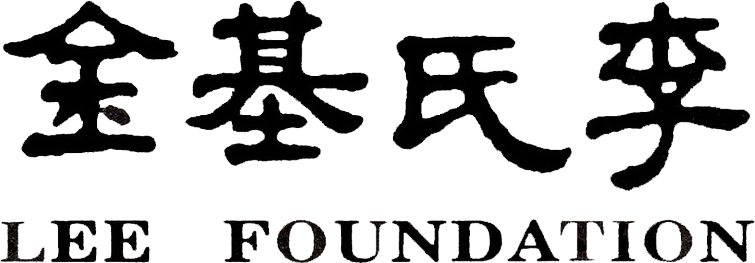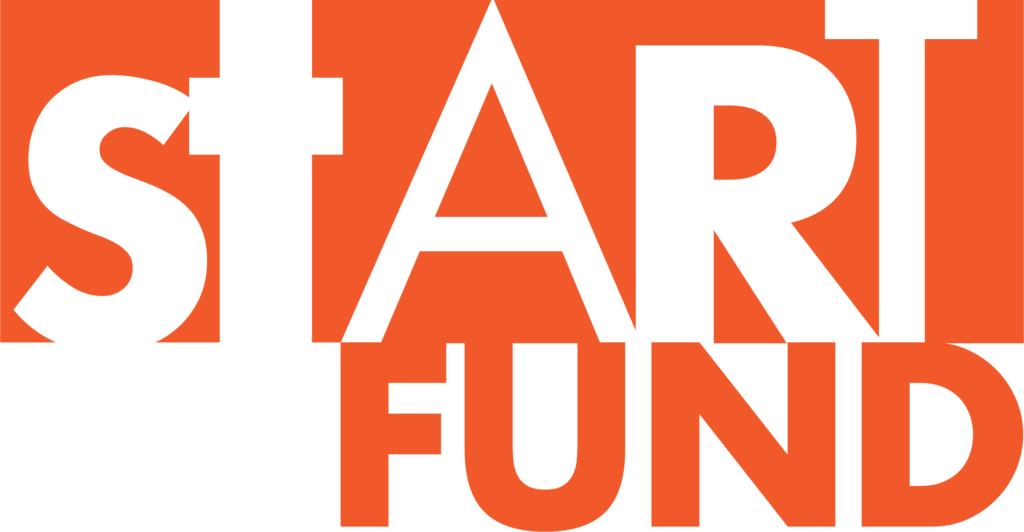By Vidhya Nair “There are no formulas. When we don’t have time, we need to make time. Prioritise. Rearrange. Dance was something I wanted to do for a long time, then I realised that I need it to remain balanced. It’s an important part of having balance, a means to find happiness.” Read more about Devapriya, Senior Company Dancer who is performing in Agathi I Refugee this April on her dance journey.
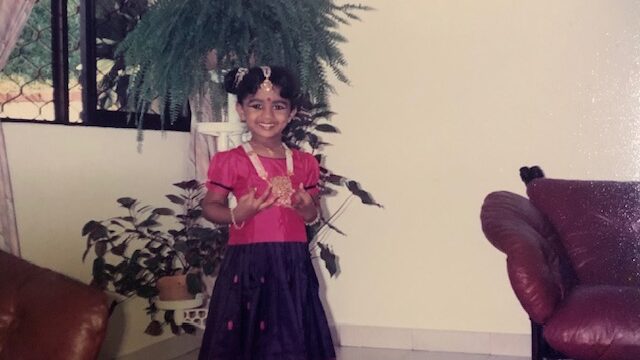
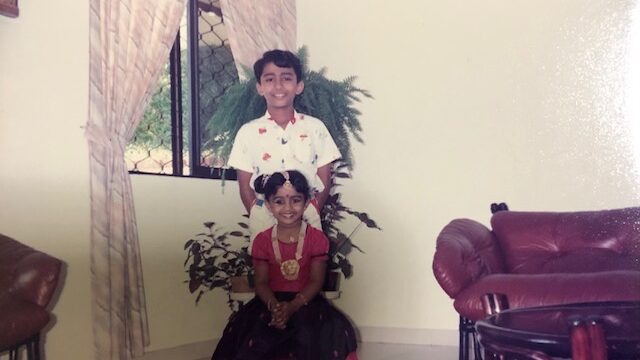
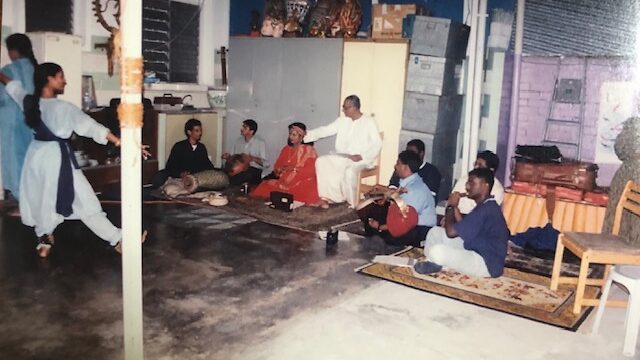
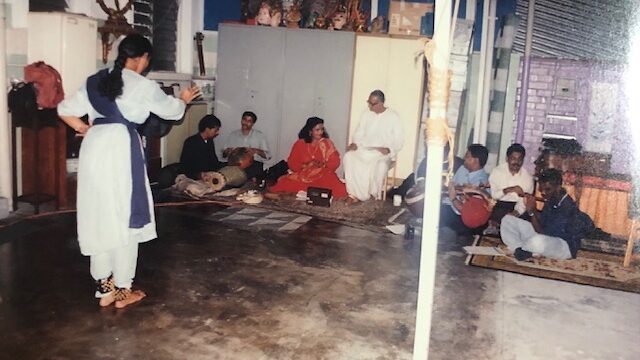
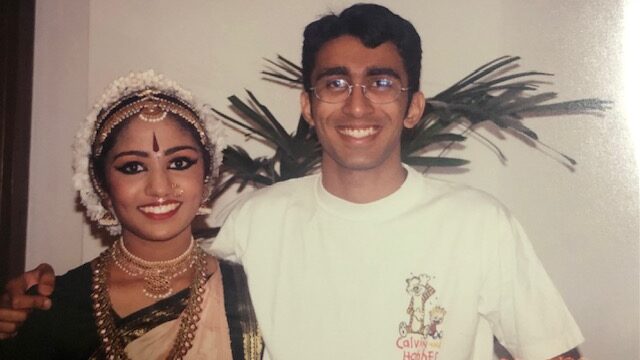
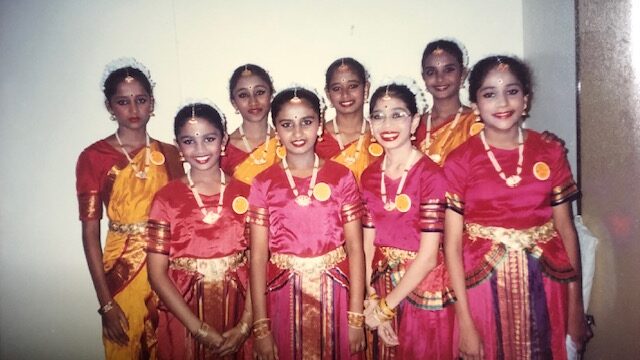

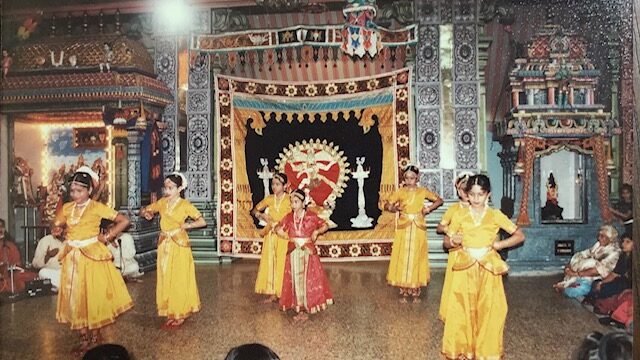
VN: Introduce yourself to us Priya. Tell us a little about your background. DP: I’m a Singaporean Indian, 2nd-3rd generation. My mother’s parents had emigrated from Malaysia. My father was born in Malaysia but returned to India during the Japanese Occupation. He returned to Singapore to work after he completed his Engineering studies in the 1960s. My father till his retirement was a university lecturer in Singapore and my mother is a doctor in private practice. I grew up with my elder brother. I had studied medicine in Melbourne and was interested in working with children and adolescents so was initially posted to Singapore General Hospital and KK Women’s’ & Children’s’ Hospital in paediatrics before I moved to specialising in psychiatry at the Institute of Mental Health (IMH) where I’m based now. My husband is a doctor and we have two sons aged 7 and 3. VN: How did you get introduced to Bharatanatyam? DP: I joined Apsaras Arts at the age of 6 years at Cairnhill Community Centre under Mohana Harendren (Neila Mami’s eldest daughter). My parents were keen for me to learn as my mother had learned the Veena as a child and many in my father’s family had learned Carnatic music. I recall speaking only Tamil till the age of 4 at home. As a student at Swiss Cottage Primary, after school either my parents or brother would take me for classes. Classes were a lot of fun. I attended many birthday parties and many of the girls I met in dance class continued to be friends even in my secondary school at Raffles Girls (RGS). I was part of “Little Angles “– a children’s’ multi-ethnic dance troupe created by Neila Mami, Mdm Som Said and Mdm Yan Choong Lian in the early 1990s. [ This was an offshoot inspired by the National Dance Company which had closed down in 1985 due to lack of funds]. In 1995, when I was in Primary 5, I travelled to Paris with the troupe and we all had to learn elements of Malay & Chinese dance along Bharatanatyam and we performed there. It was during school term time but my parents allowed me to participate. This was the first time I got to be trained by Mami. Back then, Mami was the feared one, the one taking our exams. Her demeanour seemed scary and imposing. She had a strict persona. During the Paris trip, my fear dissipated as she was very engaging and protective. By Secondary 1, I started to take individual classes with Mohana akka in preparation for my Arangetram. Mami taught me personally several items of my repertoire – the Pushpanjali, Varnam and the Kirtanams. It was an eye-opening experience. My arangetram took place on 3 July 1999 at Jubilee Hall, Raffles Hotel. I was 15. It was an exciting night for me and I also sang part of my kritanam, ‘Kurai ondrum illai’. The few months leading up to the event was exhilarating and stressful. My parents were worried when they saw that I had lost so much weight and was coping with pains from physical injuries and it was quite daunting, managing school and dancing to live music to an audience. My fondest memories of that time were the evening practice sessions at Mami’s house on Meiyappan Chettiar road. It felt like a Gurukulam. Like I was living there too – spending lots of time with both Mama and Mami who would insist I have my meals there. It made me feel independent and consider dance as a serious pursuit. VN:What was your relationship like with Neila Mami? DP: I was one of the few medical students learning dance with her. Her students each had their individual relationship with her but I would get all the medical questions. Sometimes you wouldn’t understand in which context she asked her questions. She would say, “Why da? Why does this person have this sickness?” She liked asking me for medical advice and would be playful when I was watching over her food habits remarking to others, “She won’t let me take it, da… She’s very strict!” She was supportive of my decision to be a doctor. I remember being introduced to famed dancer Dr Padma Subramanyam in India as a medical student. She was mostly concerned about me continuing to dance. She was not one to meddle in your choices. I recall asking her why she was not encouraging another student also in medicine to not discontinue and she said, “No da, she’s different. I know you will continue.” She had the ability to allow you to learn from others and often made the learning happen. She helped me organise lessons while I was studying in Melbourne. I learned from Chandrabanu in Melbourne and later in India where I also did a year of research, I learned from a teacher in Vellore and spent a month in Bangalore learning from Kiran Subramanyam & Sandhya Kiran. The teaching there was very different. I learned many new aspects of choreography, listened to new music. When I returned, I had to show to Mami what I had learnt and taught it to others (e.g., the Thillana I learned in Bangalore was taught to my peer, Loga who performed it for her arangetram). Mami also challenged me, often giving me more than I would think I’m capable of. Three months after I had my older son, Mami cast me in a production and was confident that I could do it. I would prefer group ensemble work but she would encourage me to take up main character roles and do solos. I would accept her decision but it was not easy to understand it then. Her priority was to keep you dancing, no matter what. I see the value in this more now. Our teacher-student bond was strong. Over the years her teaching methods changed from being strict to engaging. She would often give you the background to a piece she’s teaching. At certain points, she would explain more as you performed it. Over time, you would get to know if she liked your work as she would often talk about you to others. Giving direct praise was not her way. VN: What were some of your memorable dance performances? DP: In 2003, during my gap year, I travelled to India & Srilanka. Mami asked me to perform a solo at the Bharat Kalachar in Chennai, a prestigious venue. I was anxious to meet her expectations, to do it well as she had invited many of her friends. In the same trip, we also performed at the Chidambaram temple during Shivaratri. The open stage, live music and well-lit evening, peering up at the Gopuram from the stage was unforgettable. Another performance, Dvayam which I performed withSeema Harikumar and again in 2020 were memorable for me. It was the first time I performed a thematic show. Juggling work after moving back to Singapore and the production was not easy but it taught me a lot about the other aspects of putting up a performance other than just the dancing.
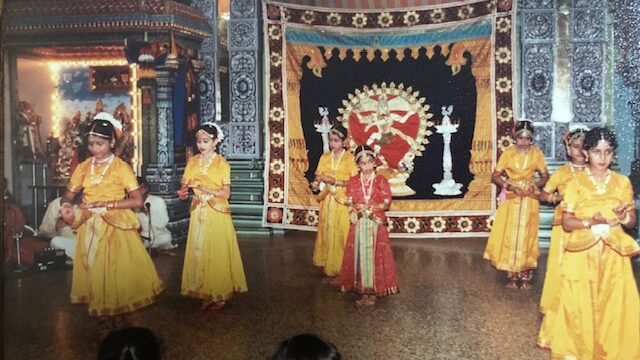
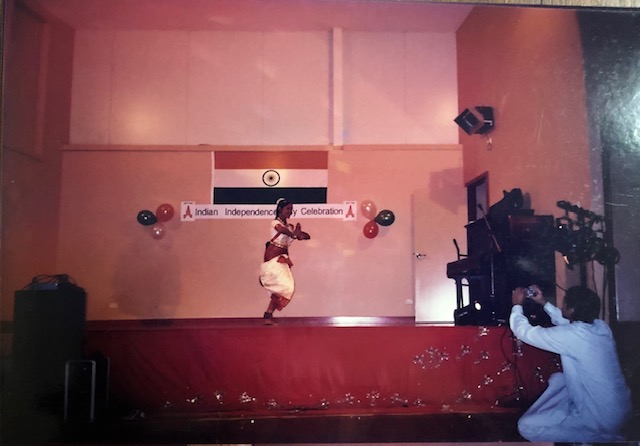
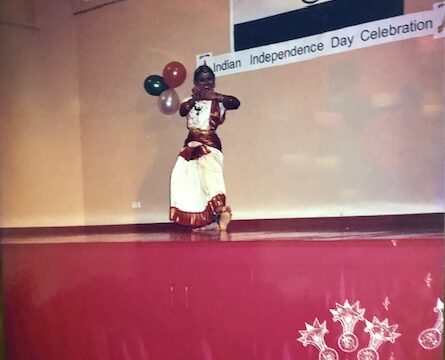
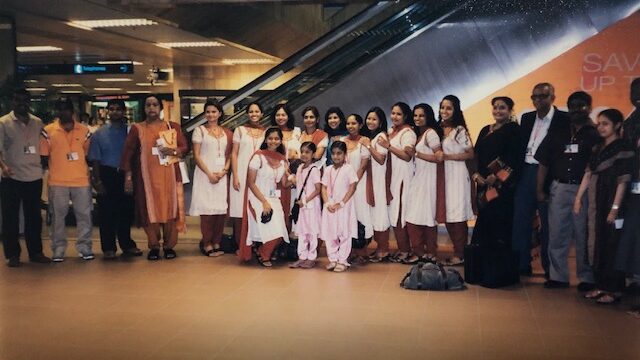
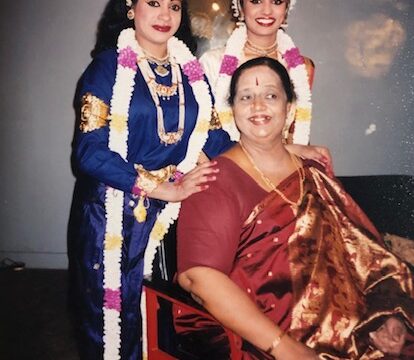

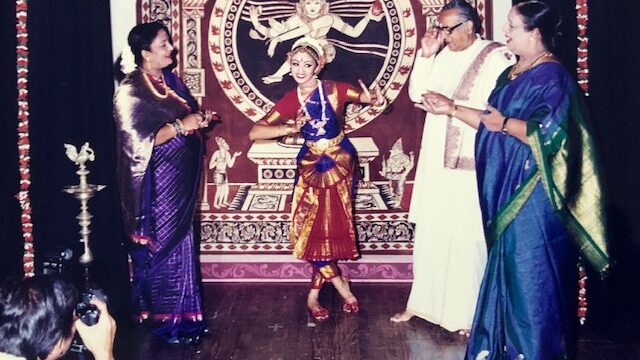
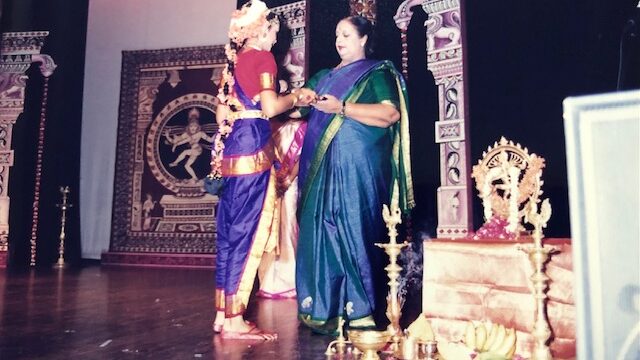
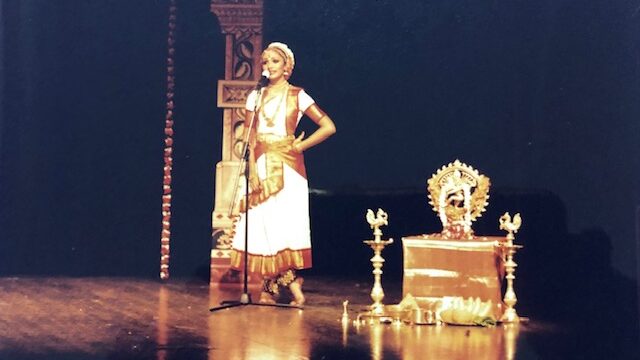
The other performance was in 2016; a production called “Finding Dignity” with Lalitha Subramony . A relevant theme on physiatry (as I was still in training). I played the character who develops schizophrenia and had to show the illness through dance. This work helped me build empathy and this exploration of mental health in dance became meaningful for me. VN:Would you say learning Bharatanatyam has been important in your personal cultural education? DP: Yes, Bharatanatyam has imparted important life skills such as discipline, multi-tasking, working within a group, finding cohesiveness, advance planning. It has also helped me become more spiritual. I didn’t come from a religious family, so dance provided the basis for spiritual knowledge which is important to ground a person, forge a personal identity. Bharatanatyam offers a unique teacher-student relationship, a concept so unique, I don’t think I have come across it in any other activity. When growing up, it’s very helpful to have someone to talk to for guidance and support. VN:How do you manage your practice of Bharatanatyam in body/mind/spirit? DP: With the body, the changes are most obvious after having children. The joints hurt and need care. It makes you more aware to look after yourself physically to continue. I am interested in Dance Therapy especially its impact on mental health. The physicality of dance and the awareness it creates in the body is an important feature of dance therapy. I find that it also helps you cope with day-to-day stresses. Dance has been a significant stress buster for me. The intense and complete focus alleviates other stresses I may have. By applying myself gainfully in dance, I feel relaxed and it helps me unwind as I navigate my job and family life. It was something Mami taught too – this need for awareness and how to regain composure, the ability to leave everything else behind while dancing. Your spirit is also in the moment and you become more aware of yourself and others around you. This grows with time and as you age. When performing Abhinaya, the realisations within help you to delve more deeply and you can distil the emotions better. As you progress in dance, as the stresses are lifted, indirectly your mood becomes calm and uplifting, even eye-opening at times. VN:How do you manage and give time to dance? DP: There are no formulas. When we don’t have time, we need to make time. Prioritise. Rearrange. Dance was something I wanted to do for a long time, then I realised that I need it to remain balanced. It’s an important part of having balance, a means to find happiness. My family has also been very supportive. My husband, parents and helper help with the children when needed. The children are aware of my dance commitment and are always excited about shows. My husband is understanding and I value his feedback. He often gives his inputs on how I should improve and would give Mami, his views which she would value. My parents offer praise and encouragement. VN:Since Mami’s passing, what is your relationship with Apsaras Arts today? DP: The Company is much more innovative in keeping with the times. It collaborates with others and has more visibility on social media. The connections with artistries around the globe remain strong and today we get to explore different aspects of Bharatanatyam and other dance forms. Every teacher I worked with is different. Mami was a very special teacher-mentor. It would be very hard to replicate everything she has done for me and the Company. Today as I work with Mohanapriyan, the guru relationship is evolving. VN:Who has inspired and motivated you in your dance journey? DP: Priyadarshini Govind was my first idol and still is. I saw her first in a live performance at a Sabha in Chennai. I relate to her style of abhinaya. Also, Leela Samson who I first met during DIAP. She spoke at length about the anatomy, how to look after the joints when dancing. It offered a new perspective and I found her approach very inspiring. When I recall her performing a piece on Ardananeswara – the way she turned around and transformed. I was awe struck. As a child, dancer-actress Shobana performed in Singapore and I remember being awe struck by her thalattu.
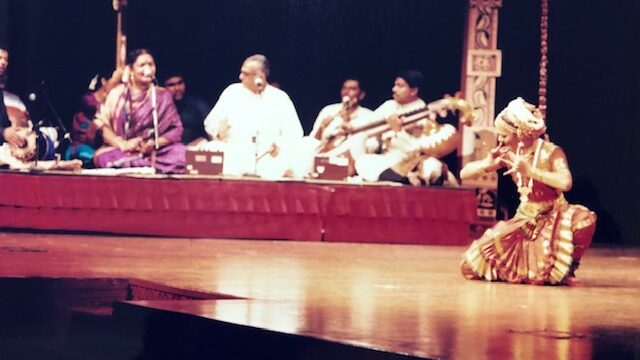
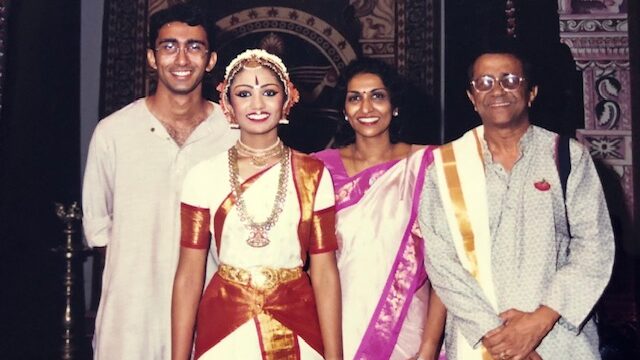
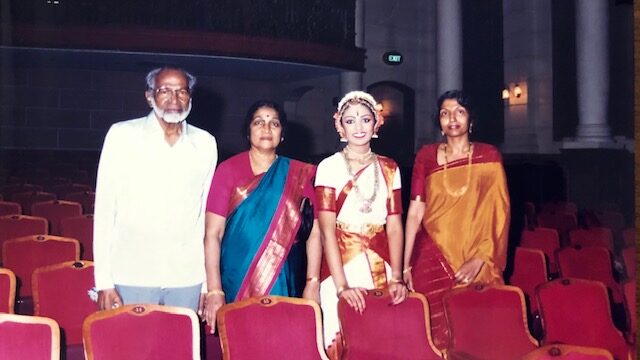
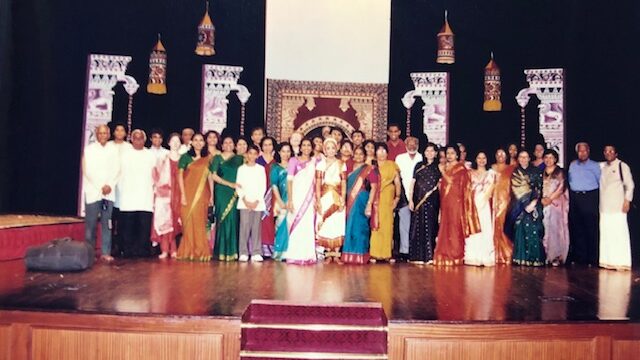
VN: In your opinion, how is the practice and performance of Bharatanatyam in Singapore today? DP: The scene has been encouraging as it has become more accessible to learn. Dancers are also looking up material related to the artform and we get to see more people performing on various platforms especially on social media. I am concerned about the grounding dance students are getting in the artform. I feel it’s important to keep learning, to have a reliable teacher. A base to go back to, keeping you grounded and constantly learning. It’s important to have someone on hand to tell you how you are doing and what might be lost if keeping up with trends is given priority. A welcome change I see is that it’s much easier now to be creative and find collaborators , doing research is also much more accessible. Dancers have the ability to think up new ideas. In this way, more will be encouraged to learn. Not all who learn can become dancers but certainly the knowledge on how to appreciate, how to watch and become rasikas will evolve, bringing more support to performances.




